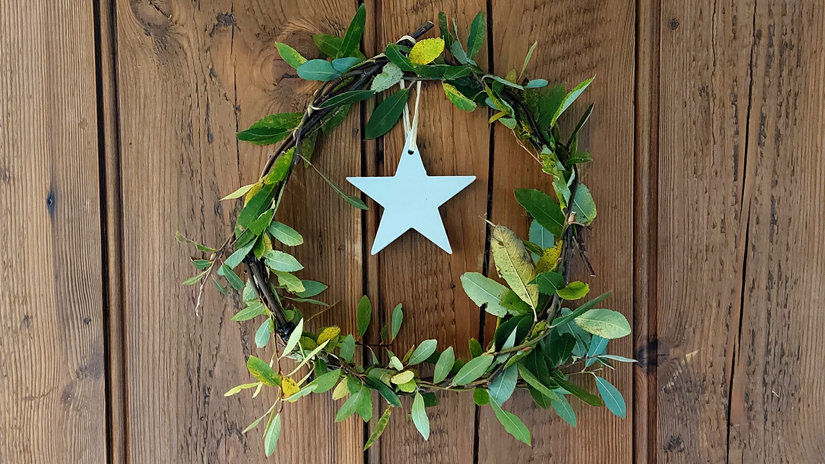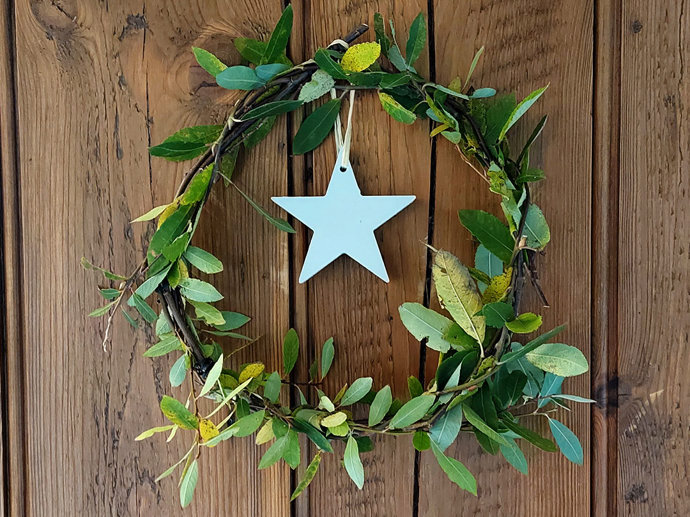Common name: sweet chestnut
Scientific name: Castanea sativa
Family: Fagaceae
Origin: non-native
Loved by the Romans and now a roasted winter treat here in the UK. These long-lived giants, with their prickly husks and deeply grooved bark, give us our classic Christmas nut.
Common name: sweet chestnut
Scientific name: Castanea sativa
Family: Fagaceae
Origin: non-native
Sweet chestnut is a deciduous tree which can reach 35m when mature and live for up to 700 years. They belong to the same family as oaks and beeches. The bark is grey-purple and smooth, and develops vertical fissures with age. The twigs are purple-brown and buds are plum, red-brown and oval in shape. They can develop vast girths which can reach up to 2m in diameter.
Look out for: widely spaced teeth around the edges of leaves. The seeds develop inside the prickly, green seed cases.
Identified in winter by: the bark which has fissures that spiral upwards around the tree.

Credit: Martin Fowler / Alamy Stock Photo
About 16–28 cm long, 5–9 cm wide and oblong with a pointed tip and a serrated or toothed edge. The leaves are quite glossy and there are about 20 pairs of prominent parallel veins.

Credit: Nature Photographers Ltd / WTML
Long, yellow catkins of mostly male flowers, with female flowers at the base. Sweet chestnut is monoecious, meaning both male and female flowers are found on the same tree.

Credit: David Sewell / Alamy Stock Photo
After pollination by insects, female flowers develop into shiny, red-brown fruits wrapped in a green, spiky case. The trees begin to bear fruit when they are around 25 years old.
Horse chestnut (Aesculus hippocastanum), which has similar nuts, but those of the sweet chestnut are smaller and found in clusters. The leaves are completely different, with sweet chestnut having single, long, serrated leaves and horse chestnut having hand-shaped leaves with deeply divided lobes or ‘fingers’.


Download our free Tree ID app for Android and iPhone to identify the UK's native and non-native trees. It's an A-Z tree guide in your pocket.

Credit: Geogphotos / Alamy Stock Photo
Sweet chestnut is native to southern Europe, western Asia and North Africa. The story of how sweet chestnut trees came to be in Britain is unclear. It has long been thought of as a Roman introduction, but science doesn’t definitively back this up. It may be that sweet chestnut trees are a far more recent introduction.
Today can be found commonly throughout the UK in woods and copses, especially in parts of southern England where it is still managed to form large areas of coppice.

Credit: Andy Sands / naturepl.com
The flowers provide an important source of nectar and pollen for bees and other insects, while red squirrels eat the nuts. A large number of micro-moths feed on the leaves and nuts.

Credit: Martin Fowler / Alamy Stock Photo
There is very little mythology surrounding the sweet chestnut in the UK, probably because it was introduced. However, the ancient Greeks dedicated the sweet chestnut to Zeus and its botanical name Castanea comes from Castonis, a Town in Thessaly in Greece where the tree was grown for its nuts.
The world’s oldest known chestnut tree grows on Mount Etna in Sicily and has a circumference of 190 feet. It is said to be between 2,000 and 4,000 years old.
Sweet chestnut timber is similar to oak but is more lightweight and easier to work. It has a straight grain when young, but this spirals in older trees. It can be used for carpentry, joinery and furniture. In southeast England, sweet chestnut is coppiced to produce poles.
Unlike the nuts of the horse chestnut, those of the sweet chestnut are edible to humans and can be roasted and used in a variety of recipes, including stuffing for poultry, cake fillings, nut roasts and much more. The Romans ground sweet chestnuts into a flour or coarse meal.
Sweet chestnuts are a rich source of vitamins C (the only nut that is) and B, and minerals including magnesium, potassium and iron. Their high level of starch is similar to that of wheat and twice as high as the potato.


Helen Keating • 05 Dec 2022
Transform your home into a woodland wonderland this Christmas with our easy ideas for festive, foraged home decor.

Sweet chestnut has been found to be susceptible to fungal diseases. Chestnut blight has recently arrived in the UK, which causes bark cankers and can lead to dieback and death. Young trees can also suffer from squirrel damage.